German arms production in WW2 from 1939-1945.
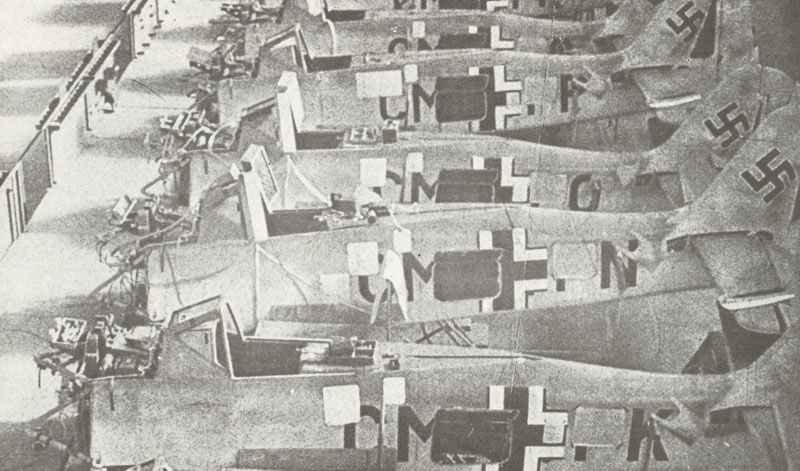
German arms production in WW2
Table of Contents
German armaments production during World War II (1939-1945) was a crucial aspect of Nazi Germany’s war effort.
Overview
Initial state: At the outbreak of WWII, Germany was not prepared for a prolonged conflict. The economy was not on a total war footing until later in the war.
Expansion and peak: German armaments production increased significantly from 1941 to 1944. Peak production was reached in 1944, despite Allied bombing campaigns.
Key figures: Albert Speer became Minister of Armaments in 1942, greatly improving production efficiency. Fritz Todt was his predecessor and initiated some early reforms.
Major categories of production:
– Aircraft: Fighters, bombers, and transport planes
– Tanks and armored vehicles
– Artillery and small arms
– Submarines (U-boats)
– Ammunition and explosives
Notable achievements: Development of advanced weapons like the Me 262 jet fighter and V-2 rocket. Mass production of effective weapons like the Panther tank and Tiger tank.
Challenges:
– Raw material shortages, especially oil and rare metals
– Manpower shortages due to military conscription
– Allied strategic bombing campaigns
– Inefficiencies in the Nazi bureaucratic system
Forced labor: Extensive use of forced labor from occupied territories and concentration camps.
Technology and innovation: Germany made significant technological advancements in various fields. Some projects, like nuclear weapons research, were not fully realized.
Decentralization: Later in the war, production was dispersed to avoid Allied bombing. Underground facilities were increasingly used.
End of production:
Armaments production began to decline rapidly in late 1944 and early 1945. Collapse of transportation networks and loss of industrial areas contributed to this decline.
Despite impressive production figures and technological innovations, German armaments production ultimately could not match the combined industrial might of the Allies, particularly the United States and Soviet Union.
The development of the German arms industry during World War II
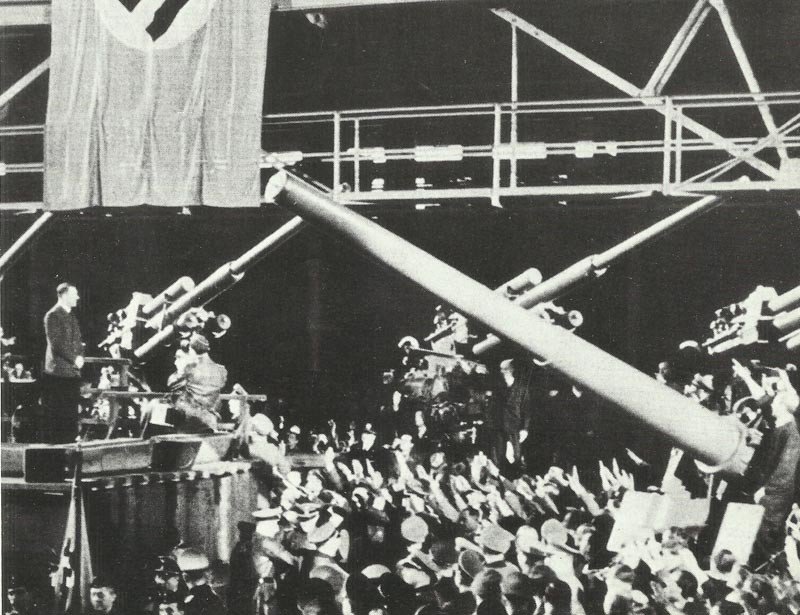
The surprisingly quickly gained ‘Blitz’ (lightning) victories in the years 1939 to 1940, as well as the initial great successes with the Operation Barbarossa, evidently proved the correctness of the ‘Blitzkrieg’ (lightning war) strategy.
Thus, on July 14, 1941, Hitler announced a disarming and conversion program for the German arms production, 1941, for the reason that ‘in the final battle, no new great opponent could be formed anymore’.
Thus, in 1941, the German armaments’ production remained at the same relatively low level in the actual year of the decision of WW2, while Great Britain, the Soviet Union, and America increased considerably.
Up to now arms production in Germany was carried out in the course of the war according to the same scheme: the German workers manufactured the armaments, were subsequently conscripted and used these self-made weapons. Once the campaign had been successfully completed, the bulk of the army was released back into the factories to produce new armaments.
However, as early as the autumn of 1941, it became clear that the victory over Russia was not possible anymore this year. This is also recognized by Hitler, but he is not willing to change the priorities for armaments.
On the Russian Front, the new tanks of the Red Army like the T-34 and KV-1, which are now emerging in ever-increasing numbers, are growing the difficulties. The German standard anti-tank gun 3.7-cm PAK 36 is not effective against it, and even the strongest German tank, the Panzer IV with the short 7.5 cm cannon, is also weaker.
This raises considerable problems for the German arms production, which are further increased by the rivalries inside the Wehrmacht. In March 1940, a Reichs Ministry for armament and ammunition under the Major-General of the Luftwaffe, Dr Fritz Todt was created. Todt, with his ‘Organization Todt’, had already organized the building of the ‘Reichsautobahnen’ (highways) and of the ‘Westwall’ (Siegfried line) and was responsible also to build the new ‘Atlantikwall’ (Atlantic wall), but his successes in the arms production are rather modest.
On February 8, 1942 Todt had a meeting with Hitler in Rastenburg (East Prussia) about the confused armament situation. A few hours later his plane crashes for unexplained reasons and Hitler’s young chief architect, Speer, is immediately appointed as successor.
Speer immediately recognizes that Hitler wants to maintain a sort of ‘pseudo-peace’ for Germany, and thus, for example, is against the use of women as workers in the industry. Obviously, Hitler had a pathological fear of a loss of popularity and wanted to avoid unrest, strikes and possible revolts or insurrections under all circumstances from the experiences of World War One.
There is also no parent control of armaments priorities between the army, the air force, Kriegsmarine (navy) as well as the new rising Waffen-SS. A development stop for the air force was already decided in 1941, since the war was regarded as won and no new and better aircraft models were needed.
All this can be solved by Speer, and he reaches a much larger German armament production until 1944, but he can no longer catch up with the lost time. If the armaments of 1944 had been available two or three years earlier, it would have been sufficient to win the war, but at that time Hitler’s enemies had, in spite of all, a powerful and oppressive predominance.
German arms production by weapon types
The annual German armaments and military equipment production (excluding ammunition) and a comparison of the necessary strategic raw materials. Additional, the origins of the strategic raw materials and effect of the Allied bombing offensive on the German arms production.
Vehicles and transportation:
Type of Weapon | 1939 | 1940 | 1941 | 1942 | 1943 | 1944 | 1945 (2-3 months) | Overall |
|---|---|---|---|---|---|---|---|---|
Battle tanks | 962 | 1,573 | 3,399 | 4,386 | 5,813 | 7,983 | 956 | 25,072 |
Flamethrower tanks | - | 87 | 47 | 81 | 110 | 20 | - | 345 |
Armored command vehicles | 44 | 34 | 132 | 131 | 134 | 41 | - | 516 |
Tank destroyers | - | - | - | - | 90 | 3,280 | 1,750 | 5,120 |
Assault guns | - | 184 | 548 | 789 | 3,279 | 5,172 | 988 | 10,960 |
Self-propelled anti-tank guns | - | 173 | 214 | 1,222 | 1,695 | 457 | 16 | 3,777 |
Assault artillery | - | - | - | 34 | 304 | 1,227 | 112 | 1,677 |
Self-propelled artillery | - | 40 | 16 | 183 | 1,362 | 670 | 87 | 2,358 |
Armored anti-aircraft guns | 15 | - | - | - | 87 | 361 | 64 | 527 |
Reconnaissance vehicles | 324 | 422 | 618 | 992 | 867 | 555 | 113 | 3,024 |
other armored vehicles | 55 | 334 | 605 | 45 | 310 | 959 | 142 | 2,450 |
Demolition vehicles (Goliath aso) | 100 | - | - | 1,088 | 4,494 | 3,102 | 138 | 8,922 |
Armored personnel carriers | 232 | 337 | 813 | 2,574 | 7,153 | 9,486 | 1,285 | 21,880 |
Semi-tracked tractors | ? | 3,224 | 7,489 | 7,627 | 9,827 | 7,840 | 696 | 36,703+ |
Semi-tracked trucks | - | - | - | 10,704 | 37,427 | 27,761 | 724 | 87,329 |
Military trucks and lorries | 32,558 | 53,348 | 51,085 | 49,707 | 52,896 | 103,314 | 4,582 | 347,490 |
Military cars | ? | ? | ? | 24,152 | 105,693 | 96,492 | ? | 226,337+ |
Military motor-cycles | ? | ? | ? | 34,017 | 33,046 | 27,830 | 2,577 | 97,470+ |
Locomotives | ? | 1,688 | 1,918 | 2,637 | 5,243 | 3,495 | ? | 14,981+ |
Train wagons | ? | 28,200 | 44,845 | 60,892 | 66,263 | 45,189 | ? | 245,389+ |
Not only the numbers were increased dramatically between 1942 and 1944, also the quality and combat effectiveness were partially strong increased, as – for example – the combat weights of the produced armored vehicles reflecting this fact:
Combat weights of the produced armored vehicles:
Year: | 1940 | 1941 | 1942 | 1943 | 1944 |
|---|---|---|---|---|---|
Numbers | 2,154 | 5,138 | 9,278 | 19,824 | 27,340 |
Combat weight in tons | 37,325 | 83,188 | 140,454 | 369,416 | 622,322 |
Average combat weight per unit | 17.3 | 16.2 | 15.1 | 18.6 | 22.8 |

Infantry weapons:
Type of Weapon | 1939 | 1940 | 1941 | 1942 | 1943 | 1944 | 1945 (2-3 months) | Overall |
|---|---|---|---|---|---|---|---|---|
Pistols | ? | ? | ? | 467,253 | 959,540 | 1,038,340 | 145,140 | 2,610,273+ |
Rifles (K98k, K41, K43, G 33/40) | ? | 1,371,700 | 1,358,500 | 1,149,593 | 1,946,200 | 2,282,380 | 310,118 | 8,418,491+ |
Machine-guns | ? | 170,880 (incl SMG) | 324,800 (incl SMG) | 77,340 | 165,527 | 278,164 | 56,089 | c. 674,280 |
Sub-machine guns MP 38, 40, 44 | ? | (in MG) | (in MG) | 152,683 | 240,073 | 500,074 | 131,672 | c. 1,400,000+ |
Anti-tank hand-weapons (up to Dec 42 Pz.B. 38,39,41 - from Aug 43 Panzerschreck) | ? | ? | ? | 880 | 50,835 | 209,000 | 21,000 | 281.715+ |
Panzerfaust (anti-tank hand weapon) | - | - | - | - | c.500,000 | 2,870,000 (only Oct-Dec), 1,500,000 or more before | 2,056,000 | c.7,000,000+ |
Mortars | ? | 4,380 | 4,230 | 18,551 | 25,955 | 29,598 | 3,675 | 86,389+ |
Artillery and guns:
Type of Weapon | 1939 | 1940 | 1941 | 1942 | 1943 | 1944 | 1945 (2-3 months) | Overall |
|---|---|---|---|---|---|---|---|---|
Artillery guns of all types | 1,214 | 6,730 | 11,200 | (details below) | (details below) | (details below) | (details below) | 159,144+ |
Light anti-tank guns (3.7-cm-PAK, 4.2-cm-PAK, Pak38) | (see art) | (see art) | (see art) | 4,798 | 2,481 | - | - | (see art) |
Medium anti-tank guns (7.5-cm-PAK 38, 40, 41, 7.62-cm PAK (r) ) | (see art) | (see art) | (see art) | 4,344 | 12,400 | 12,151 | 618 | (see art) |
Heavy anti-tank guns (8.8-cm-PAK, 12-cm-PAK) | - | - | - | - | 1,224 | 2,058 | 367 | (see art) |
Light anti-aircraft guns | (see art) | (see art) | (see art) | 15,527 | 19,602 | 16,863+ | 1,771+ | (see art) |
Heavy anti-aircraft guns | (see art) | (see art) | (see art) | 1,028 | 6,138 | 7,714+ | ? | (see art) |
Infantry guns | (see art) | (see art) | (see art) | 1,687 | 2,802 | 6,458 | 876 | (see art) |
Nebelwerfer (rocket launcher) | (see art) | (see art) | (see art) | 3,864 | 1,706 | 3,767 | 460 | (see art) |
Light art (mainly 10.5 cm) | (see art) | (see art) | (see art) | 1,476 | 4,533 | 9,000 | 604 | (see art) |
Heavy art (10-cm K18, sFH, 17-cm-K) | (see art) | (see art) | (see art) | 931 | 1,773 | 3,652 | 475 | (see art) |
Super-heavy art (21-cm-K, 20.3-cm-K, 24-cm H, K3, K5, K38, E, M1) | (see art) | (see art) | (see art) | 33 | 123 | 125 | 61 | (see art) |
Planes:
Type of Weapon | 1939 | 1940 | 1941 | 1942 | 1943 | 1944 | 1945 (2-3 months) | Overall |
|---|---|---|---|---|---|---|---|---|
Bomber planes | 737 | 2,852 | 3,373 | 4,337 | 4,649 | 2,287 | - | 18,235 |
Fighter planes | 605 | 2,746 | 3,744 | 5,515 | 10,898 | 25,285 | 4,935 | 53,728 |
Ground attack planes | 134 | 603 | 507 | 1,249 | 3,266 | 5,496 | 1,104 | 12,359 |
Reconnaissance planes | 163 | 971 | 1,079 | 1,067 | 1,117 | 1,686 | 216 | 6,299 |
Seaplanes, floatplane | 100 | 269 | 183 | 238 | 259 | 141 | - | 1,190 |
Transport planes | 145 | 388 | 502 | 573 | 1,028 | 443 | - | 3,079 |
Gliders | - | 378 | 1,461 | 745 | 442 | 111 | 8 | 3,145 |
Communication planes | 46 | 170 | 431 | 607 | 874 | 410 | 11 | 2,549 |
Trainers | 588 | 1,870 | 1,121 | 1,078 | 2,274 | 3,693 | 318 | 10,942 |
Jet fighters | - | - | - | - | - | 564 | 929 | 1,493 |
Jet bombers | - | - | - | - | - | 150 | 64 | 214 |
Fi 103 flying bomb (V-1) | - | - | - | - | - | 23,672 | 6,509 | 30,181 |
A-4 rocket (V-2) | - | - | - | - | - | 4,128 | 1,669 | 5,797 |
Ships:
Type of Weapon | 1939 | 1940 | 1941 | 1942 | 1943 | 1944 | 1945 (2-3 months) | Overall |
|---|---|---|---|---|---|---|---|---|
U-boats | 58 | 50 | 219 | 222 | 292 | 283 | 98 | 1,220 |
Battleships | - | 1 | 1 | - | - | - | - | 2 |
Destroyers | - | 2 | 5 | 3 | 6 | 2 | - | 18 |
Torpedo boats | ? | ? | 6 | 6 | 6 | 6 | - | 24+ |
MTB's | ? | ? | 36 | 36 | 41 | 63 | - | 176+ |
It is noteworthy that the significant increase in arms production between 1942 and 1944 (over 300%) was made possible without access to more resources. It was especially done through much greater productivity and stripping out the civilian industrial sector. Therefore the following overview:
Annual strategic raw material production (m. metric tons):
Year: | 1939 | 1940 | 1941 | 1942 | 1943 | 1944 | 1945 |
|---|---|---|---|---|---|---|---|
Coal | 332.8 | 364.8 | 402.8 | 407.8 | 429.0 | 432.8 | 50.3 |
Ore | 18.5 | 29.5 | 53.3 | 50.6 | 56.2 | 32.6 | ? |
Steel | 23.7 | 21.5 | 28.2 | 28.7 | 30.6 | 25.8 | 1.4 |
Aluminum (in 1,000 metric tons - especially important for aircraft production) | 239.4 | 265.3 | 315.6 | 420.0 | 432.0 | 470.0 | ? |
Important influences on Germany’s military production
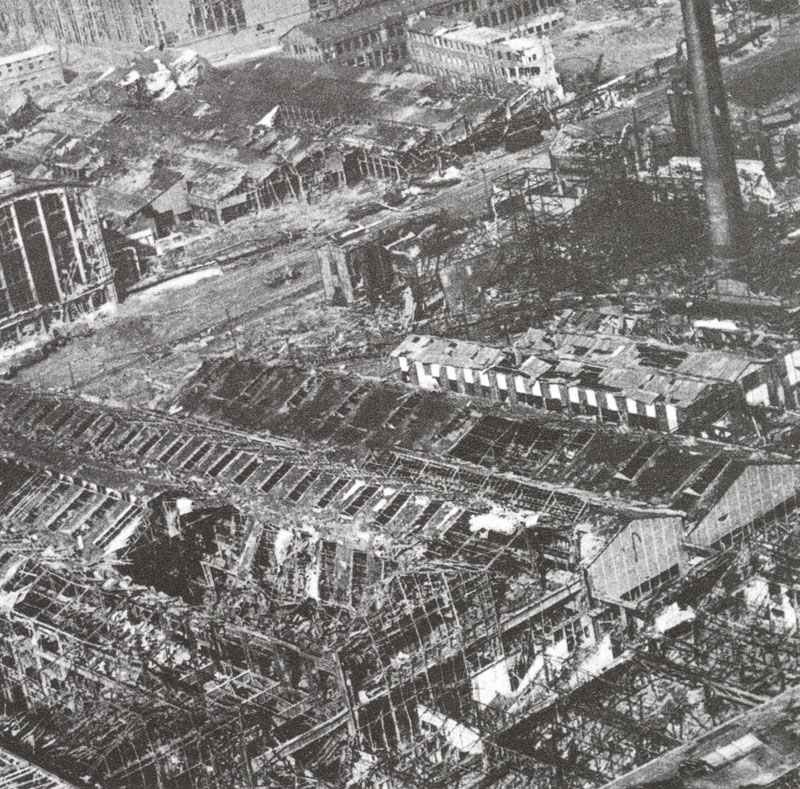
Several factors had an important influence on the ability of Germany to produce armaments, munitions and military equipment during World War 2.
This includes the dependence on raw materials from the occupied and conquered territories or it’s import from neutral countries. Similarly, the Allied bombing offensive resulted in significant losses and forced a costly relocation of production facilities.
The importance of occupied and neutral countries for strategic raw materials for Germany:
Monthly average in 1,000 tonnes for 1943:
selected, important strategic raw materials | Greater Germany | Occupied Territories | Overall | Proportion of the occupied territories in % |
|---|---|---|---|---|
Iron ore (particularly from France and Belgium) | 950.0 | 437.0 | 1,387.0 | 31.5 % |
Coal | 23,200.0 | 6,400.0 | 29,600.0 | 21.6 % |
Crude steel (mainly from France) | 2,550.0 | 337.0 | 2,887.0 | 11.7 % |
Aluminium | 20.8 | 9.7 | 30.5 | 31.8 % |
Pulp | 5.3 | 14.5 | 19.8 | 73.2 % |
Total | 26,726.1 | 7,198.2 | 33,924.3 | 21.2 % |
Importance of manganese ore from Ukraine 1941-1943 (in 1,000 tonnes manganese content):
selected, important strategic raw materials | Greater Germany | Occupied Territories | Overall | Proportion of the occupied territories in % |
|---|---|---|---|---|
Iron ore (particularly from France and Belgium) | 950.0 | 437.0 | 1,387.0 | 31.5 % |
Coal | 23,200.0 | 6,400.0 | 29,600.0 | 21.6 % |
Crude steel (mainly from France) | 2,550.0 | 337.0 | 2,887.0 | 11.7 % |
Aluminum | 20.8 | 9.7 | 30.5 | 31.8 % |
Pulp | 5.3 | 14.5 | 19.8 | 73.2 % |
Total | 26,726.1 | 7,198.2 | 33,924.3 | 21.2 % |
Important raw material imports from neutral countries 1942-1944:
Country | raw material | 1942 | 1943 | 1944 |
|---|---|---|---|---|
Sweden | Iron ore (in 1,000 tons) | 8,000 | 10,300 (=38%) | 4,500 |
Pulp (in 1,000 tons) | 174 | 150 | 110 |
|
Portugal | Tin ore (in tonnes) | 649 | 1,236 | ? |
Tungsten ore (in tonnes) | 611 | 463 | 895 |
|
Turkey | Chrome ore (in tonnes) | - | 4,950 | 11,700 |
These tables are showing, for example, that such an important strategic raw material like iron ore (for steel production) in 1943 was coming by 42% from Greater Germany, 38% were imported from Sweden and 20% were delivered by the occupied territories.
Failures in arms production as results of the Allied bombing offensive:
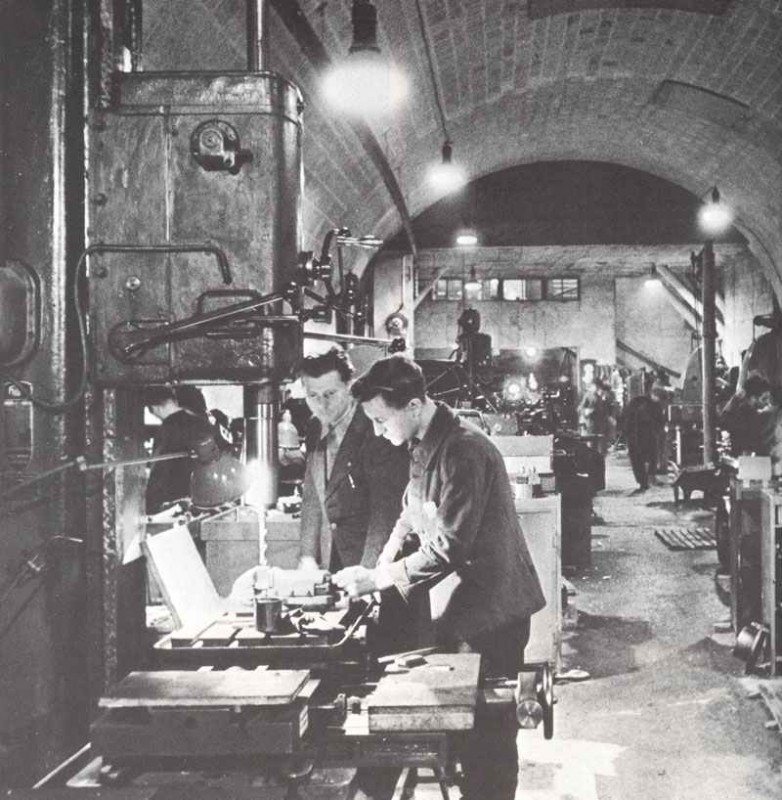
Selection of the period from October to December 1943:
Weapon | Manufacturing | Failure | Overall | Proportion of failure in % |
|---|---|---|---|---|
StuG assault gun | 909 | 177 | 1,086 | 16.3 % |
776 | 144 | 920 | 15.6 % |
|
173 | 79 | 252 | 31.4 % |
|
Semi-tracked carriers | 457 | 210 | 667 | 31.5 % |
7.5-cm Pak 40 | 645 | 55 | 700 | 7.9 % |
8.8-cm-Pak 43/41 | 117 | 63 | 180 | 35.0 % |
light FH 18/40 gun | 268 | 32 | 300 | 10.7 % |
heavy 10-cm gun 18 | 26 | 19 | 45 | 42.2 % |
Trucks | 11,373 | 2,257 | 13,630 | 16.6 % |
Overall | 14,744 | 3,036 | 17,780 | 17.1 % |
Selection of Germany cities, based on the few effective and most ineffective bombing attacks in the view of loss of production:
City | first 500t attack | total dropped bombs in tons | Population 1939 | Population share of Germany | Value of the industrial production in 1000 RM (c.$450) | Share of industrial production of Germany | Total production failure in months | Failure based on the total production of whole Germany |
|---|---|---|---|---|---|---|---|---|
Wuppertal | 29.05.1943 | 5,883 | 401,672 | 0.50 % | 77,242 | 0.82 % | 4.4 | 0.30 |
Düsseldorf | 31.07.1942 | 24,000 | 726,261 | 0.91 % | 153,262 | 1.63 % | 2.2 | 0.30 |
Dortmund | 04.05.1943 | 17,538 | 542,261 | 0.68 % | 84,866 | 0.90 % | 3.4 | 0.26 |
Bochum | 13.05.1943 | 11,175 | 305,495 | 0.38 % | 84,820 | 0.90 % | 2.8 | 0.21 |
Bremen | 22.06.1942 | 13,890 | 450,084 | 0.56 % | 114,132 | 1.22 % | 1.9 | 0.20 |
Leipzig | 20.10.1943 | 4,764 | 831,615 | 1.07 % | 157,822 | 1.68 % | 1.2 | 0.17 |
Oberhausen | 14.06.1943 | 3,067 | 191,842 | 0.24 % | 47,785 | 0.51 % | 2.0 | 0.09 |
Hagen | 01.10.1943 | 4,502 | 151,760 | 0.19 % | 32,082 | 0.34 % | 0.6 | 0.02 |
for comparison: | ||||||||
Berlin | 01.03.1943 | 35,000 | 4,338,756 | 5.46 % | 717,251 | 7.41 % | irrelevant | irrelevant |
Stuttgart | 11.03.1943 | 20,822 | 458,429 | 0.57 % | 176,790 | 1.84 % | irrelevant | irrelevant |
Munich | 09.03.1944 | 16,666 | 893,954 "1.12 %" | 161,865 | 1.72 % | irrelevant | irrelevant | |
Cologne | 31.05.1942 | 30,679 | 887,724 | 1.11 % | 132,600 | 1.41 % | irrelevant | irrelevant |
Essen | 03.04.1943 | 31,146 | 666,743 | 0.83 % | 113,512 | 1.21 % | irrelevant | irrelevant |
Gelsen-kirchen | 25.06.1943 | 8,035 | 317,568 | 0.40 % | 88,667 | 0.95 % | irrelevant | irrelevant |
Progress of the bombing war 1940-1945 (in tons of bombs dropped):
Year: | 1940 | 1941 | 1942 | 1943 | 1944 | 1945 (4 months) | total (projected 1945 to a full year) |
|---|---|---|---|---|---|---|---|
on cities in Germany | 10,000 = 0.4 % | 30,000 = 1.3 % | 40,000 = 1.7 % | 120,000 = 5.1 % | 650,000 = 27.7 % | 500,000 (1,500,000 projected for the year) = 63.8 % | 2,350,000 (actual 1,350,000) |
for comparison; on cities in UK | 38,844 | 21,858 | 3,260 | 2,298 | 9,151 | 761 (2,283 projected for the year) | 77,694 (actual 76,172) |
References and literature
Das Deutsche Reich und der Zweite Weltkrieg (10 Bände, Zentrum für Militärgeschichte)
World War II – A Statistical Survey (John Ellis)
Illustrierte Geschichte des Dritte Reiches (Kurt Zentner)
Chronology of World War II (Christopher Argyle)
German Aircraft of World War 2 in Colour (Kenneth Munson)
Encyclopedia of German Tanks of World War Two (P.Chamberlain, H.L.Doyle)
Kraftfahrzeuge und Panzer der Reichswehr, Wehrmacht und Bundeswehr (Werner Oswald)


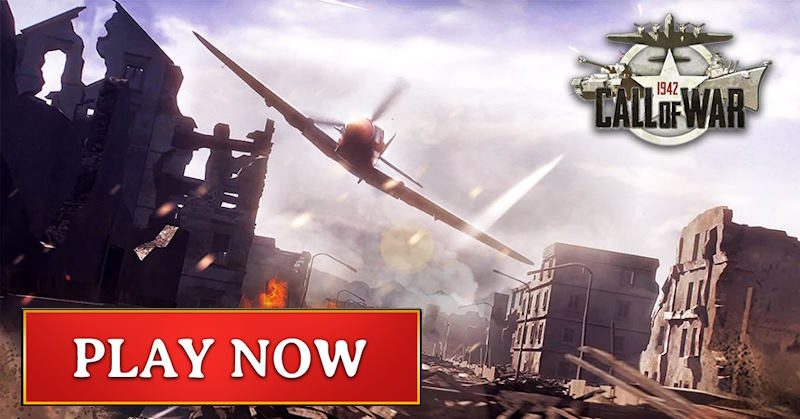
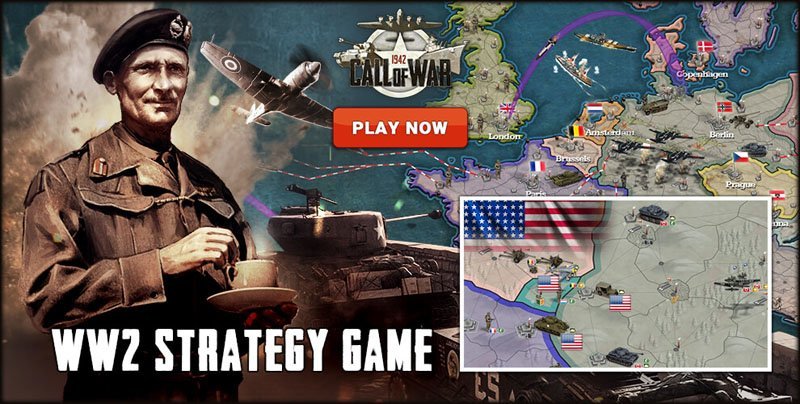
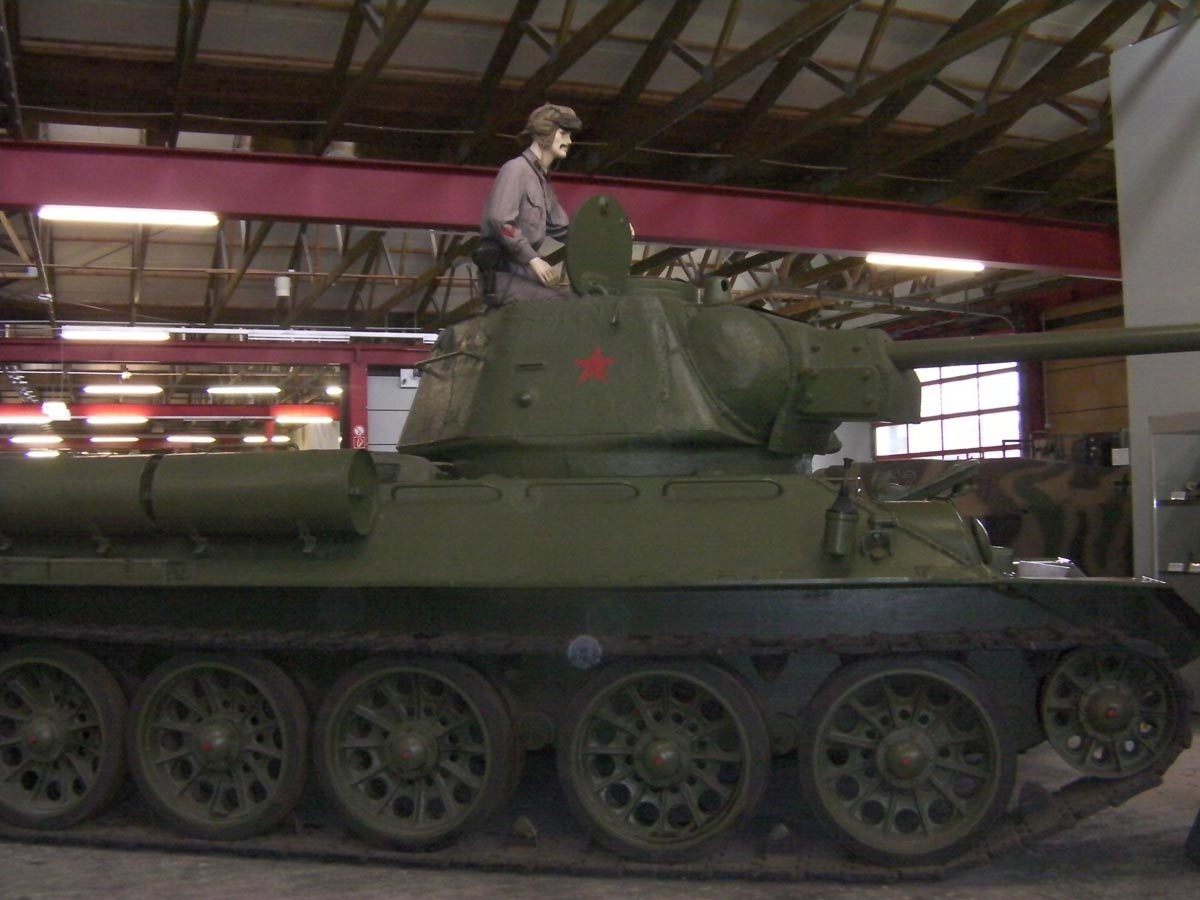
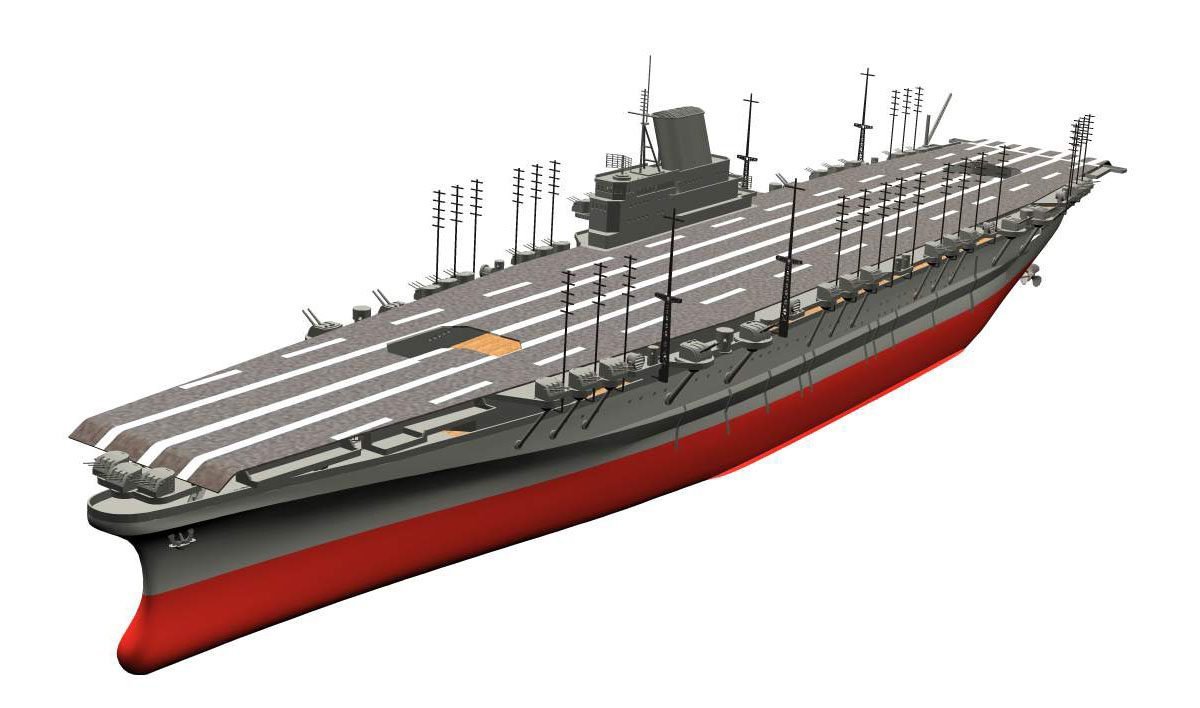
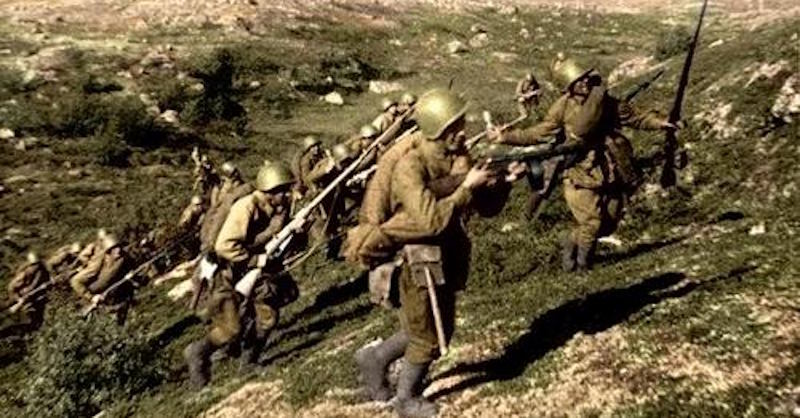
The RAF Bomber Command was obsessed with bombing cities in order to de-house the working population, in the belief that they would then not turn up for work at the factories.
This proved to be a mistaken idea but was continued right up to wars end with Dresden in 1945 being a prime example of that idea.
Although the US Airforce did join in some of this city bombing, they quickly realised that it was German infrastructure that was the key bottleneck, so they concentrated on oil, communications, engineering and aircraft production, with good results.
So it was the USAAF bombers that did the most damage to the German war industry with the RAF bombers, despite their huge losses, just rally making brick rubble.
A simplistic view I know, but largely true.
Does anyone know if Germany was capable of mass producing the cannon shell required by the Luftwaffe at The Battle Of Britain. I’ve heard a claim the cannon shell they needed were supplied to them by neutral countries.
I think you are perhaps axis States mixed up, Japan had problems sourcing the electrically fired ammo for their German made 20mm Mauser cannon, I don’t think Germany would have had any problems sorting ammo for their own equipment as they had even started manufacturing ammo for the British 3.7inch AA guns which they captured 1940 in large numbers from the BEF
Hi! I wanted to ask you about a common myth, which states Germany had very poor logistics to supply its troops on the Eastern Front, and that that doomed it to inevitably fail in the eastern front. I don’t deny the first part, of course (incompatible railway tracks, vast distances, partisan activity, poor-maintained roads, etc.) but the second part is jus a myth, right? I mean, logistics alone could no have possibly bring victory to the USSR…
Much of what was left of the vaunted Luftwaffe was defending the skies over German cities, or flying missions on the Eastern Front… seems odd we don’t hear more of the air war in the East after Stalingrad…
Ineffective. Do you not understand why the Luftwaffe was not present on D-Day?
According to Adam Tooze, The Wages of Destruction (2006): “On the eve of war 14.6 million German women were working, with 51% of women of working age (16–60 years old) in the workforce. Nearly six million were doing farm work, as Germany’s agricultural economy was dominated by small family farms. 2.7 million worked in industry. When the German economy was mobilized for war it paradoxically led to a drop in female work participation, reaching a low of 41% before gradually climbing back to over 50% again. This still compares favorably with the UK and the US, both playing catchup, with Britain achieving a participation rate of 41% of women of working age in 1944. However, in terms of women employed in war work, British and German female participation rates were nearly equal by 1944, with the United States still lagging.” This idea of Hitler being against women in the workforce, isn’t supported by the reality of what happened.
two uncles taken from the Netherlands to work in a German armaments factory. Often had labour disruptions and workers were punished for this. What aws the name od this factory and where was it located. Thanks.
1944 was the year of highest war production. Interesting…
Yet it is when the bombing really got started. Check Richard Overy’s The Bombing War to understand how ineffective strategic bombing was, yet very costly for the Allies.
Richard Overy pretty much claims that the Bombinb campaign was effectice. He says it in the exact same book your mentioned.
Phillips Payson O’Brien is his book “How The War Was Won” is suggesting that at least 55% but even 60% of German war production was targetting air warfare, 12-13% sea warfare and only about 30% of munitions went on land warfare. With all efforts including V-weapons, concreat sheltet construction because allied strategic bombing that share of air war might have been bigger than 60%.
Do you have a page number or reference for this stat please? I want to use it an essay. Thanks 🙂
Hello!
Interesting data set but what is the source of this material; figures etc?
In addition would you know where I could find an allied POW chart showing total number of allied captured by Germany and allies?
Cheers!
Hi !
All data here are used to develop realistic War Games (means the outcome most be the same thna in history if every decision taken by the opponents is the same).
So from a lot of sources the ‘strong’, safe, confirmed and true datas to reaxh this goal are used and it’s impossible to mention all of them here.